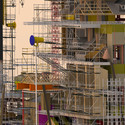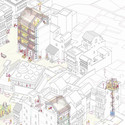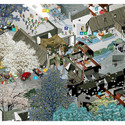
This year the Architectural Association (AA) Visiting School programme will extend its reach to the Dutch city of Rotterdam – a place which, "by some strange twist of geographical and historical fate, has the highest concentration of architects and architectural thinkers in the world." The workshop, which will run for two weeks in July, will explore issues of inhabitance, perception, and intensity through analysis and creative interpretation of Rotterdam’s 'core' "or, more likely, its multiple cores, invisible to the untrained eye." Based in the Shell Tower on Hofplein, students will be afforded the opportunity to observe and analyse the city from on-high.


























assembly_of_suburbia.jpg?1406067449)




.jpg?1389747228&format=webp&width=640&height=429)





